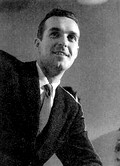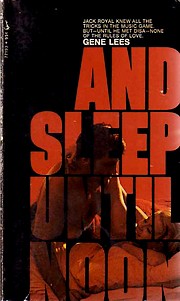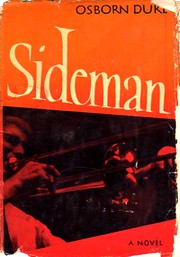
When poet Charles Reznikoff died in 1976, his wife, Myrie Syrkin, gave his papers to publisher John Martin of Black Sparrow Press, which had begun collecting and issuing his poetry and other writings. A while later, Martin called Syrkin to say he’d found the manuscript of a completed novel titled The Manner Music. She knew nothing of it — and Reznikoff had usually discussed anything he was working on with her. What’s more, Martin added, it’s a Hollywood novel. For a couple of years in the late 1930s, Reznikoff had worked in Hollywood as a researcher and assistant to Albert Lewin, an acquaintance from his Brooklyn youth who’d been a protege of Irving Thalberg and worked his way up to producer. Maurice Zolotow later compared the discovery to finding a T. S. Eliot novel about banks or one by Wallace Stevens about insurance.
The Hollywood label has stuck with The Manner Music ever since. In reality, saying The Manner Music is a Hollwood novel is like saying Moby Dick is a Nantucket novel: not untrue but generally missing the point. Milton Hindus, a friend of Reznikoff and a stalwart supporter, came closer to the mark in noting the parallels between the book and Melville’s Bartleby the Scrivener. Both stories involve two men: one a prosperous pragmatist, the other an ascetic idealist. In both stories, the narrator is nameless; in both, he is at a loss to understand the other man’s obsession. Both are case studies demonstrating the observation of Reznikoff’s friend William Carlos Williams that “The pure products of America go crazy.”
Reznikoff’s Bartleby is a composer named Jude Dalsimer. Like Reznikoff, Dalsimer works and lives alone in Hollywood while working for a studio producer, known as Paul Pasha in the book, so that his wife could stay in New York and keep her job as a teacher. He doesn’t mingle with the other writers, avoids most parties. He rents a room in a little hotel in Santa Monica, far out the tramline from the studios. Like Reznikoff, he prefers to walk, usually for miles along the beach, down the coast as far as Redondo and Hermosa Beach.
In his introduction, Robert Creeley observes that the two characters in The Manner Music resemble two aspects of Reznikoff himself. As Reznikoff did for a time after leaving college, the narrator is a traveling salesman in dry goods, and his work allows him to meet his friend Jude in both New York and Hollywood. Like Reznikoff, who held down a steady job as a social workder for years, the narrator accepts the monotony and occasional humiliations of the work in return for its security: “Like all salesmen, I suppose, I am very patient. We soon learn to wait for hours in anterooms and to send our cards again and again and still to be pleasant and to smile.” The narrator accepts listening to Jude performing his music on the cheap piano in his apartment in the same manner. “I listened patiently then for an hour or more — most likely less — and again heard nothing that moved me.” Jude’s music isn’t to his taste — not like band music or “an old fellow singing old songs for pennies in the backyards.”

Jude Dalsimer, on the other hand, represents Reznikoff’s artistic self. Though he wrote and published his poetry throughout much of his working life, Reznikoff never gained much recognitition for it until very late and he tended not to discuss it with many of his acquaintances. As a fellow Brooklyn poet, Harvey Shapiro once wrote, “Reznikoff devoted his entire life to verse, and whatever he did is characterized by meticulously fine and painstaking craftsmanship.” None of his poems, Hindus observed, “were made merely in order to ‘sell and sell quickly.’ They are without exception patient labors of love, pure skill and artistic integrity, and they seem bound, in time, to find fit readers (however few or many) to respond to their muted appeal.”
Jude is not particularly concerned with the success of his music: “As to whether it will be sold or not, sung or played, that is really not my business. I am not going to bother about that too much: my job is to write it. That no one else can do.” If anything, he is deeply suspicious of the American culture of consumerism. He tells of a dinner party at which a German refugee, a former concentration camp prisoner, was asked to speak. Instead of talking about his experiences in Germany, however, he told the story of a friend who’d committed suicide soon after arriving in America. “Why? Why did he do it?” the man asked. “I will tell you why. Because of the indifference here!” Late in the book, when destitute, homeless, and hopeless, he burns all his compositions in a trashcan in Central Park.
Both Dalsimer and Reznikoff were also great walkers and listeners. Reznikoff’s letters to Syrkin are full of things seen on his walks:
A study in tempo of conversation: a pretty big boy and a little boy are walking together. The little boy is really tagging after the other one- eager to be a fellow. The older fellow is wearing a peculiar hat and the younger fellow asks, “What kind of hat is that?” No answer. “What kind of hat is that, Stanley?” emphasizing the name. Stanley answers cheerfully, “A monkey hat.” “What kind of hat is that?” the little fellow asks again, not what kind of hat is that (namely a “monkey hat”) but what kind of a hat is that (namely, the hat you have on). And again Stanley says curtly and cheerfully, pleased with his own wit, “A monkey hat.” But, after a pause he adds, “A small round sailor hat.” Specific enough, to be sure, but the little fellow now says aloud to himself, “A monkey hat,” wondering, perhaps, if it is really a kind of hat and if so what an attractive name for a hat and could he get one …
Dalsimer’s music is also drawn from what he sees on his walks. The narrator compares one piece to the sound of the wind “blowing down a street on an April evening, rattling windows and making the swinging signs of the stores squeak.” When Jude tries to recount recent incidents, the narrator says, “‘Better yet,’ and here I lied as all salesmen lie and flatter, ‘play them.'” “Well,” Jude replies, “I was taking a walk,” and he proceeds to play.
Some of the walks in The Manner Music show us a country deep in the grips of the Depression:
As I walked along the drive again, I saw a man coming towards me; a poor man by his clothes: he had no overcoat and his trousers were of a cheap goods without the tailor’s crease. We were alone, for the day was cold and the drive was windy. I saw that he had stopped and was watching me furtively; a man of forty or fifty with an honest face, I thought, lined by cared. When I had passed, I could see that he stooped to pick up something — probably a cigar butt or cigarette that someone about to step on a bus had thrown away. Perhaps he had been ashamed to stoop for it in front of me.
The narrator has his last encounter with Jude in an automat in Manhattan. “I noticed that a seam in the collar had parted and another in the shoulder and that the thread that edged the buttonhole in the lapel was unraveling.” Asked where he’s staying Jude replies, “I have the airiest room in New York.” Only later does the narrator understand what this means.
A number of Reznikoff’s poems make their way into The Manner Music — or perhaps vice-versa. In the novel, for example, the narrator recalls,
When I left the theatre it was raining. I went to my hotel through the wholesale district, the streets of which were empty at night, rain or no rain, although busy enough by day when offices and lofts were full of people. I passed an old woman selling newspapers from the shelter of a doorway. As I bought one, I glanced down at her feet.
“You were looking at my feet, weren’t you?” she asked. “Aren’t they terrible—so big in these rubbers. But it is better to have your feet look big than to get them wet,’ she added, still dubious. “A man lent them to me. They are rubbers for a man and I had to tie them with a string. But better than to be sick, eh?”
I took shelter in the doorway, too, to get out of the rain for a moment. “But how big my feet look in them,” she went on. I wondered as I listened, Does this old woman selling newspapers in the rain on this lonely corner still think it matters how her feet look—big or small? I looked at her again: whatever she had been only life was left — and vanity.
This shows up again in a passage from Inscriptions: 1944-1956:
It was raining and the street
empty. I passed an old woman selling newspapers.
As I bought one
I glanced at her feet.
“So big
in these rubbers.
But it’s better than to get them wet,” she added,
dubious, “and to be sick.
A man lent them. They are rubbers for a man, not me,
and I have to time them on with a string.
But how big my feet look!” I looked at her again:
only this was left — vanity.
Sirkin thought her husband might have kept the book a secret because of its portrait of Jude Dalsimer’s wife: “A petulant, pretty, notably unsympathetic female, a Zionist, a high school teacher who tactlessly keeps complaining about her fatigue and lets her talented, unappreciated husband end his poverty-striken quest in Bellevue. A roman-à-clef with a vengeance!” Reading Reznikoff’s Selected Letters, however, one sees that much of it was drawn from his letters to her. In September 1939, for example, as he saw his job with Albert Lewin about to come to an end, he wrote:
At lunch, and we go to lunch together every day, I am silent for long stretches and obviously comfortably so; now he makes conversation, tells stories I have heard before, and which he feels, somewhat uncomfortably that I have heard him tell; they are not particularly good stories, for example, how he dined with a certain friend and this friend engaged in a quarrel with somebody at another table, who was then insignificant but is now the head of a studio—a great man; I listen politely and think with some satisfaction that now I can make a suitable reply.
In The Manner Music, this becomes a lunch between Jude Dalsimer and Paul Pasha:
Paul and he went to the studio each day, but did nothing, waiting for the next move by the heads of the studio. They went out to lunch together, daily, for Paul no longer had any appointments. There was a change between them — slight but perceptible to both. Now that the relation of master and man was about to end — most likely in a week or two — they became equals again. At lunch Jude was generally silent. Comfortably so. It was Paul who tried to make conversation, who told stories which Jude had heard and which Paul felt, uncomfortably, that Jude had heard him tell.
Myrie Sirkin suspected that he wrote The Manner Music after William Carlos Williams suggested that the exercise might help him overcome a writer’s block he was experiencing in the late 1940s. “Perhaps it was the writing of this novel which enabled Reznikoff to overcome what appears to have been a psychic or spiritual blockage (whatever the causes were) to rediscover his ancient springs, to return to poetry,” Anthony Rudolf later speculated. This should not, however, diminish the value of The Manner Music. It is, in the words of Milton Hindus, “a small, multi-faceted gem” that deserves its place on the shelf of great American short novels alongside Bartleby.











 I probably would have filed
I probably would have filed 

